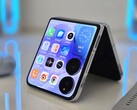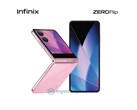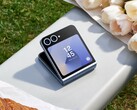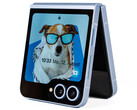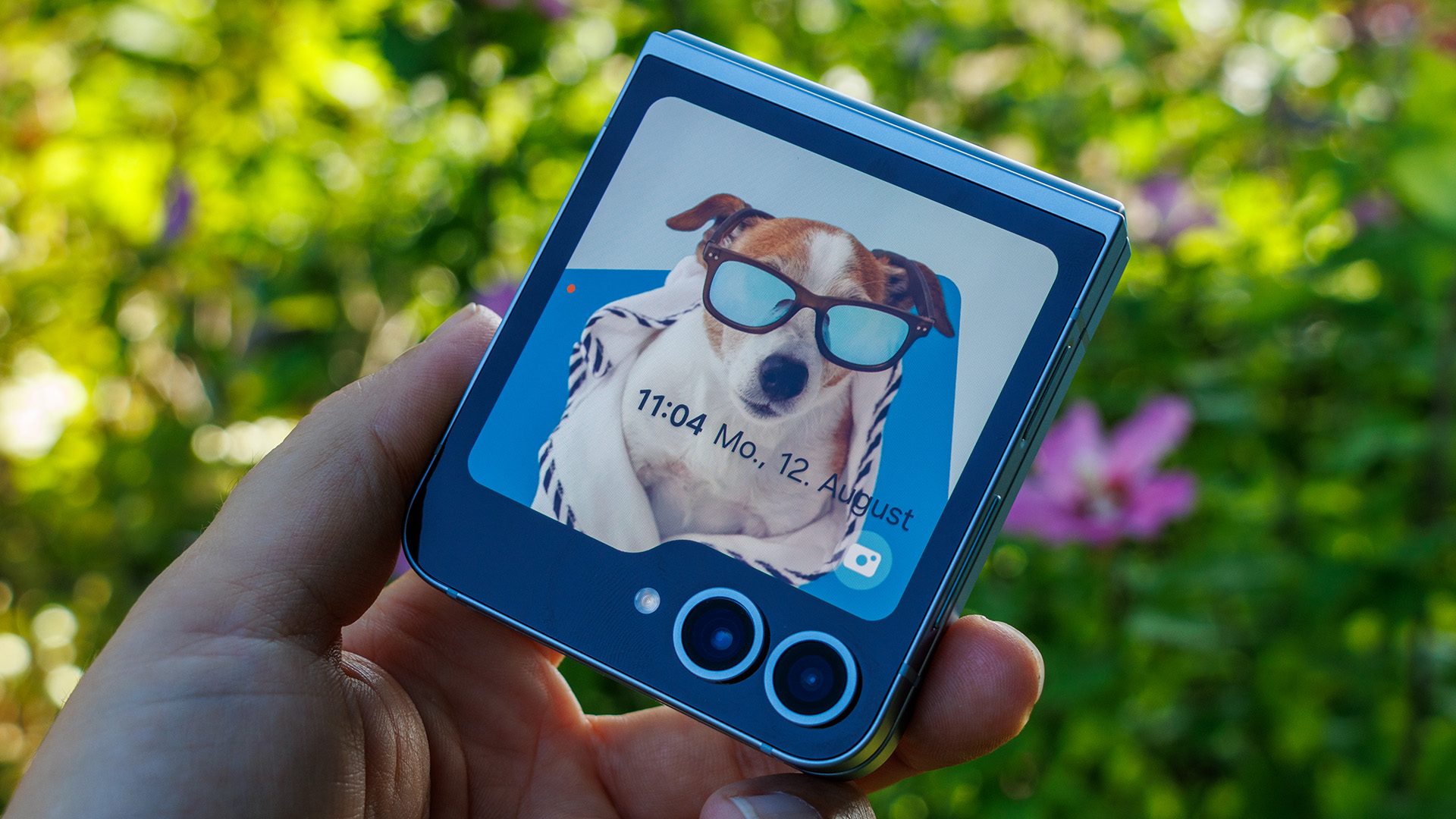
Samsung Galaxy Z Flip6 5G review - An almost unrivalled flip phone continues to improve
The Flip goes on.
Once again, the Samsung Galaxy Z Flip6 sees some small improvements this year: A new SoC, optimized cameras, IP certification, a brighter display and more. In particular, Samsung has made decisive steps forward regarding updates. Our extensive review has everything you need to know.Daniel Schmidt, 👁 Daniel Schmidt (translated by Andrew Dickson) Published 🇩🇪 🇫🇷 ...
Compared to its predecessor, the Galaxy Z Flip5, you immediately notice the Samsung Galaxy Z Flip6 5G's squarer design. However, the internals have also received some changes: Samsung has treated its foldable to more RAM, new cameras, a bigger battery, and IP certification as well as a brighter main display.
Both the Flip6's prices and memory specs are identical to the predecessor. The device comes with either 256 GB ($1,099) or 512 GB ($1,219).
Possible competitors compared
Rating | Version | Date | Model | Weight | Drive | Size | Resolution | Price |
|---|---|---|---|---|---|---|---|---|
| 84.7 % | v8 | 09 / 2024 | Samsung Galaxy Z Flip6 5G SD 8 Gen 3 for Galaxy, Adreno 750 | 187 g | 512 GB UFS 4.0 Flash | 6.70" | 2640x1080 | |
| 80.4 % | v8 | 08 / 2024 | Motorola Razr 50 Ultra SD 8s Gen 3, Adreno 735 | 189 g | 512 GB UFS 4.0 Flash | 6.90" | 2640x1080 | |
| 85.4 % v7 (old) | v7 (old) | 05 / 2024 | Nubia Flip 5G SD 7 Gen 1, Adreno 644 | 214 g | 256 GB UFS 2.2 Flash | 6.90" | 2790x1188 | |
| 86.3 % v7 (old) | v7 (old) | 02 / 2024 | Oppo Find N3 Flip Dimensity 9200, Immortalis-G715 MP11 | 201 g | 256 GB UFS 4.0 Flash | 6.80" | 2520x1080 |
Note: We have recently updated our rating system and the results of version 8 are not comparable with the results of version 7. More information is available here.
Case - Flip6 with Gorilla Glass Victus 2 and IP48
Samsung has stuck with the same form factor for the Galaxy Z Flip6. Despite it having exactly the same dimensions as both of its predecessors, it's now a bit squarer and comes in new colors: Silver Shadow, Blue, Yellow and Mint. Three exclusive colors - Crafted Black, White and Peach are available on Samsung's online store.
The foldable smartphone feels wonderful in the hand and has a premium finish. All gap dimensions are flush and fit perfectly. Any attempts to twist the device result in the internal display creaking a little. But, apart from that, the Flip6 is very solid.
Once more, the matte frame consists of Armor Aluminum, and its glass surfaces are made from Corning Gorilla Victus 2. The Galaxy smartphone is now IP48 certified. This means it enjoys protection when subjected to permanent submersion at a depth of up to 1.5 meters. Likewise, it is protected from the penetration of foreign objects greater than one millemeter in size.
Features - USB 3.2 and more RAM
In terms of features, Samsung hasn't changed much. Both storage versions now come with 12 GB of RAM, the rest reminds us a lot of its predecessor.
The USB 3.2 port (1st gen) can be used for wired image output, however, it only mirrors the Flip6 and DeX isn't on board. Connected to an SSD (Samsung 980 Pro), our 214.72 MB/s copy transfer test speeds can be described as decent.
Software - The Galaxy Z Flip 6 comes with Galaxy AI
The Samsung Galaxy Z Flip6 5G comes with Android 14 and the One UI 6.1.1 user interface which includes the full range of Samsung's Galaxy AI functions we are already familiar with from the S24 series.
Samsung is also extending the update guarantee for its foldable phones to seven years (up to July 31, 2031). At the time of testing, the security patches were from September 1, 2024, meaning they are bang up to date. The Flip6 only lags quite a bit behind when it comes to the Play system updates.
Once again, the external display can show various widgets - an area in which the Flip hardly differentiates itself from its predecessor. Adapted apps can also be used. However, the function must first be activated under Labs, and the list continues to be very incomplete.
Sustainability
When it comes to sustainability, Samsung is setting an example for the rest of the industry. In the sustainability reports on the website you can find detailed information regarding the Galaxy Z Flip6's carbon footprint and the proportion of recycled and recyclable materials has increased significantly once again. We can no longer detect the use of any plastic in the outer packaging.
Samsung also wants its customers to be able to repair the device and appropriate instructions are available from the manufacturer itself. The Flip 6 is still quite new and therefore the selection on offer remains less than fully developed. However, this should hold true in the coming weeks.
Communication and GNSS - The Samsung smartphone comes without Wi-Fi 7
The Samsung Galaxy Z Flip 6 supports various mobile frequency bands meaning there also shouldn't be any reception problems outside Europe. All of the modern standards including 5G Sub6 are supported.
For Wi-Fi networks, the Flip6 only has Wi-Fi 6E support at its disposal. Although this means the 6 GHz band is on board but the current standard is left out.
On top of this, Bluetooth 5.3 and NFC are on board but not UWB.
| Networking | |
| Samsung Galaxy Z Flip6 5G | |
| iperf3 receive AXE11000 | |
| iperf3 transmit AXE11000 | |
| iperf3 transmit AXE11000 6GHz | |
| iperf3 receive AXE11000 6GHz | |
| Average of class Smartphone | |
| iperf3 receive AXE11000 | |
| iperf3 transmit AXE11000 | |
| iperf3 transmit AXE11000 6GHz | |
| iperf3 receive AXE11000 6GHz | |
The Galaxy Z Flip6 5G uses dual-band GNSS to determine its position. Indoors, the satellite fix is possible but can take a little longer. Outdoors, the Samsung smartphone determines its location very quickly and precisely.
On a bike tour, we compared the location accuracy with a Garmin Venu 2. The Flip6 showed decent route recording but there were a few minor outliers. However, this shouldn't lead to any problems in everyday use.
Telephone functions and voice quality
In our tests, making calls with the Galaxy Z Flip6 was characterized by natural voice quality and background noise is filtered out effectively. The speaker function also did a good job in everyday use.
Functions such as VoLTE and Wi-Fi calls are supported. The Samsung foldable can accommodate the use of a physical Nano SIM card as well as an eSIM. Likewise, dual eSIM operation is possible.
Cameras - Sensors inherited from the Galaxy S24
The front camera on the inside of the Samsung Galaxy Z Flip 6 5G captures 10 MP images and only offers a fixed focus. Nevertheless, it still takes relatively good photos in daylight and videos are recorded at a maximum of Ultra HD at up to 60fps. Better-looking selfies can be taken via the main camera with the external display, as already seen in the Flip5, serving as a viewfinder.
On the rear, the Flip6 has opted for a dual camera and, identical to the Galaxy S24, it consists of a wide-angle (23 mm) and an ultra-wide angle lens (13 mm). Unfortunately, a dedicated telephoto lens is not integrated but the mains sensor allows an almost lossless 2x magnification and even the 5x zoom still manages to deliver good results. A maximum digital zoom of up to 10x is possible.
The ultra-wide angle captures good images with balanced sharpness in the center of the image. However, there is increased blurriness towards the edges and there is a visible grainy structure.
With the main camera, it is also possible to record videos in Ultra HD at up to 60fps, however, it is not permissible to switch between lenses during recording.
Image comparison
Choose a scene and navigate within the first image. One click changes the position on touchscreens. One click on the zoomed-in image opens the original in a new window. The first image shows the scaled photograph of the test device.
Main cameraMain cameraUltra-wide angle5x zoomLow-light

Accessories and warranty - Prices for Care+ remain stable
The Galaxy Z Flip6 5G is supplied with a SIM tool and a USB-C cable. Optionally, a charger as well as various protective cases can be ordered via Samsung or third-party suppliers.
In Germany, the Flip6 possesses a 24-month warranty which can be extended with the Care+ insurance package, costing between 129 and 349 US dollars.
Input devices & operation - Face recognition with every camera
The Galaxy Z Flip6's capacitive touchscreen functions very reliably on both displays and gives no cause for criticism. The foldable panel's fold is pleasantly flat but still noticeable. A keyboard is also available on the cover screen and it does its job precisely.
Regarding biometric security, a fingerprint sensor is housed in the function button which delivers reliable recognition rates. Alternatively, or additionally, slightly less secure face recognition is possible via the cameras. The linear vibration motor provides crisp haptic feedback and is very quiet.
Display - A bright LTPO OLED in the Galaxy Z Flip6
The Samsung Galaxy Z Flip6 5G's 6.7-inch, dynamic AMOLED display uses LTPO and can dynamically adjust the refresh rate between 1 and 120 Hz. Common HDR standards are supported but Dolby Vision is absent.
In the center of a pure white background image with the ambient light sensor activated, the brightness sits at 1,210 cd/m². With an equal distribution of bright and dark areas (APL18), this increases up to 2,636 cd/m² and up to 2,684 cd/m² when playing an HDR video on YouTube. If you wish to adjust the brightness manually, 417 cd/m² are available and choosing the option Additional Brightness will get you 709 cd/m².
At minimum brightness, the OLED flickers at a frequency of 120 Hz and as soon as the brightness is increased this rises to 240 Hz. Despite the low amplitude, sensitive users should expect some issues.
| |||||||||||||||||||||||||
Brightness Distribution: 98 %
Center on Battery: 1210 cd/m²
Contrast: ∞:1 (Black: 0 cd/m²)
ΔE ColorChecker Calman: 3.1 | ∀{0.5-29.43 Ø4.78}
ΔE Greyscale Calman: 2 | ∀{0.09-98 Ø5}
97.6% sRGB (Calman 2D)
Gamma: 2.05
CCT: 6666 K
| Samsung Galaxy Z Flip6 5G Dynamic AMOLED 2X, 2640x1080, 6.7" | Motorola Razr 50 Ultra P-OLED, 2640x1080, 6.9" | Nubia Flip 5G OLED, 2790x1188, 6.9" | Oppo Find N3 Flip AMOLED, 2520x1080, 6.8" | Samsung Galaxy Z Flip5 5G Dynamic AMOLED, 2640x1080, 6.7" | |
|---|---|---|---|---|---|
| Screen | 22% | 30% | 23% | -6% | |
| Brightness middle (cd/m²) | 1210 | 1099 -9% | 1164 -4% | 922 -24% | 836 -31% |
| Brightness (cd/m²) | 1221 | 1087 -11% | 1172 -4% | 932 -24% | 848 -31% |
| Brightness Distribution (%) | 98 | 95 -3% | 97 -1% | 96 -2% | 97 -1% |
| Black Level * (cd/m²) | |||||
| Colorchecker dE 2000 * | 3.1 | 1.04 66% | 0.7 77% | 0.7 77% | 2.6 16% |
| Colorchecker dE 2000 max. * | 4.2 | 2.36 44% | 1.5 64% | 1.8 57% | 4.5 -7% |
| Greyscale dE 2000 * | 2 | 1.1 45% | 1.1 45% | 0.9 55% | 1.6 20% |
| Gamma | 2.05 107% | 2.199 100% | 2.2 100% | 2.24 98% | 2.22 99% |
| CCT | 6666 98% | 6418 101% | 6482 100% | 6569 99% | 6319 103% |
* ... smaller is better
Screen Flickering / PWM (Pulse-Width Modulation)
| Screen flickering / PWM detected | 120 Hz Amplitude: 18.35 % | ||
The display backlight flickers at 120 Hz (worst case, e.g., utilizing PWM) . The frequency of 120 Hz is very low, so the flickering may cause eyestrain and headaches after extended use. In comparison: 53 % of all tested devices do not use PWM to dim the display. If PWM was detected, an average of 8142 (minimum: 5 - maximum: 343500) Hz was measured. | |||
A series of measurements with fixed zoom and various brightness settings (the amplitude curve at minimum brightness appears very flat, however, this is due to the scaling. The enlarged version of the amplitude at minimum brightness can be seen in the info box.)
The Galaxy Z Flip6's color and gray scale reproduction is good but there are visible deviations from the target value, especially in terms of the colors. This isn't a problem in everyday use but, given the price class, Samsung could do with paying more attention to this area.
Display Response Times
| ↔ Response Time Black to White | ||
|---|---|---|
| 1.38 ms ... rise ↗ and fall ↘ combined | ↗ 0.7135 ms rise | |
| ↘ 0.6645 ms fall | ||
| The screen shows very fast response rates in our tests and should be very well suited for fast-paced gaming. In comparison, all tested devices range from 0.1 (minimum) to 240 (maximum) ms. » 7 % of all devices are better. This means that the measured response time is better than the average of all tested devices (20.2 ms). | ||
| ↔ Response Time 50% Grey to 80% Grey | ||
| 4.03 ms ... rise ↗ and fall ↘ combined | ↗ 2.078 ms rise | |
| ↘ 1.955 ms fall | ||
| The screen shows very fast response rates in our tests and should be very well suited for fast-paced gaming. In comparison, all tested devices range from 0.165 (minimum) to 636 (maximum) ms. » 14 % of all devices are better. This means that the measured response time is better than the average of all tested devices (31.7 ms). | ||
Outdoors, the foldable Samsung smartphone makes a good impression, offering extensive luminosity reserves for most lighting conditions. Only the reflective surface can get annoying when viewed from a wide angle.
The AMOLED panel's viewing angle stability is very good. However, at very wide viewing angles there is a visible loss in brightness and the displayed image gets cooler.
Cover Display - Only 60 Hz and darker
The external 4.3-inch AMOLED display could be a little larger and, in the test, we measured it to have lower brightness than the main display.
With the ambient light sensor activated, we recorded a brightness of 993 cd/m² in the center of a pure white image. When it came to HDR reproduction, this climbed to 1,295 cd/m². If you adjust the brightness manually, you have up to 649 cd/m² at your disposal.
At 1.44 cd/m², the minimum brightness is low and represents the perfect basis for eye-friendly use in the dark. Unfortunately, the 60 or 240 Hz PWM frequency is quite low and, for this reason, sensitive users should expect to experience some issues.
Performance - A faster Snapdragon for the Samsung phone
The Galaxy Z Flip 6 is powered by the Snapdragon 8 Gen 3 for Galaxy and can rely on 12 GB LPDDR5x RAM in every storage variant.
The speed is on a very high level and operating the system is a pleasantly smooth experience.
| UL Procyon AI Inference for Android - Overall Score NNAPI | |
| Oppo Find N3 Flip | |
| Average of class Smartphone (3769 - 81594, n=138, last 2 years) | |
| Average Qualcomm Snapdragon 8 Gen 3 for Galaxy (15793 - 18852, n=3) | |
| Samsung Galaxy Z Flip5 5G | |
| Samsung Galaxy Z Flip6 5G | |
| Motorola Razr 50 Ultra | |
The graphics unit comes in the form of the Adreno 750 which supports hardware-based ray tracing and promises high levels of performance. In the comparison field, you can clearly see it sets itself apart from the competition.
GFXBench (DX / GLBenchmark) 2.7: T-Rex Onscreen | 1920x1080 T-Rex Offscreen
GFXBench 3.0: on screen Manhattan Onscreen OGL | 1920x1080 1080p Manhattan Offscreen
GFXBench 3.1: on screen Manhattan ES 3.1 Onscreen | 1920x1080 Manhattan ES 3.1 Offscreen
GFXBench: on screen Car Chase Onscreen | 1920x1080 Car Chase Offscreen | on screen Aztec Ruins High Tier Onscreen | 2560x1440 Aztec Ruins High Tier Offscreen | on screen Aztec Ruins Normal Tier Onscreen | 1920x1080 Aztec Ruins Normal Tier Offscreen | 3840x2160 4K Aztec Ruins High Tier Offscreen
3DMark: Steel Nomad Light Unlimited Score | Steel Nomad Light Score
| 3DMark / Wild Life Extreme Unlimited | |
| Samsung Galaxy Z Flip6 5G | |
| Samsung Galaxy Z Flip5 5G | |
| Oppo Find N3 Flip | |
| Motorola Razr 50 Ultra | |
| Nubia Flip 5G | |
| 3DMark / Wild Life Extreme | |
| Samsung Galaxy Z Flip6 5G | |
| Oppo Find N3 Flip | |
| Samsung Galaxy Z Flip5 5G | |
| Motorola Razr 50 Ultra | |
| Nubia Flip 5G | |
| 3DMark / Wild Life Unlimited Score | |
| Samsung Galaxy Z Flip6 5G | |
| Oppo Find N3 Flip | |
| Samsung Galaxy Z Flip5 5G | |
| Motorola Razr 50 Ultra | |
| Nubia Flip 5G | |
| 3DMark / Wild Life Score | |
| Motorola Razr 50 Ultra | |
| Nubia Flip 5G | |
| 3DMark / Solar Bay Score | |
| Samsung Galaxy Z Flip6 5G | |
| Oppo Find N3 Flip | |
| Samsung Galaxy Z Flip5 5G | |
| Motorola Razr 50 Ultra | |
| 3DMark / Solar Bay Unlimited Score | |
| Samsung Galaxy Z Flip6 5G | |
| Samsung Galaxy Z Flip5 5G | |
| Oppo Find N3 Flip | |
| Motorola Razr 50 Ultra | |
| 3DMark / Sling Shot Extreme (ES 3.1) Unlimited Physics | |
| Samsung Galaxy Z Flip5 5G | |
| Nubia Flip 5G | |
| Samsung Galaxy Z Flip6 5G | |
| Motorola Razr 50 Ultra | |
| 3DMark / Sling Shot Extreme (ES 3.1) Unlimited Graphics | |
| Samsung Galaxy Z Flip6 5G | |
| Samsung Galaxy Z Flip5 5G | |
| Motorola Razr 50 Ultra | |
| Nubia Flip 5G | |
| 3DMark / Sling Shot Extreme (ES 3.1) Unlimited | |
| Samsung Galaxy Z Flip5 5G | |
| Samsung Galaxy Z Flip6 5G | |
| Motorola Razr 50 Ultra | |
| Nubia Flip 5G | |
| GFXBench (DX / GLBenchmark) 2.7 / T-Rex Onscreen | |
| Samsung Galaxy Z Flip5 5G | |
| Samsung Galaxy Z Flip6 5G | |
| Motorola Razr 50 Ultra | |
| Oppo Find N3 Flip | |
| GFXBench (DX / GLBenchmark) 2.7 / T-Rex Offscreen | |
| Samsung Galaxy Z Flip5 5G | |
| Samsung Galaxy Z Flip6 5G | |
| Oppo Find N3 Flip | |
| Motorola Razr 50 Ultra | |
| GFXBench 3.0 / Manhattan Onscreen OGL | |
| Samsung Galaxy Z Flip5 5G | |
| Samsung Galaxy Z Flip6 5G | |
| Motorola Razr 50 Ultra | |
| Oppo Find N3 Flip | |
| GFXBench 3.0 / 1080p Manhattan Offscreen | |
| Samsung Galaxy Z Flip6 5G | |
| Samsung Galaxy Z Flip5 5G | |
| Motorola Razr 50 Ultra | |
| Oppo Find N3 Flip | |
| GFXBench 3.1 / Manhattan ES 3.1 Onscreen | |
| Samsung Galaxy Z Flip5 5G | |
| Samsung Galaxy Z Flip6 5G | |
| Motorola Razr 50 Ultra | |
| Oppo Find N3 Flip | |
| GFXBench 3.1 / Manhattan ES 3.1 Offscreen | |
| Samsung Galaxy Z Flip6 5G | |
| Samsung Galaxy Z Flip5 5G | |
| Oppo Find N3 Flip | |
| Motorola Razr 50 Ultra | |
| GFXBench / Car Chase Onscreen | |
| Samsung Galaxy Z Flip6 5G | |
| Samsung Galaxy Z Flip5 5G | |
| Motorola Razr 50 Ultra | |
| Oppo Find N3 Flip | |
| GFXBench / Car Chase Offscreen | |
| Samsung Galaxy Z Flip6 5G | |
| Samsung Galaxy Z Flip5 5G | |
| Motorola Razr 50 Ultra | |
| Oppo Find N3 Flip | |
| GFXBench / Aztec Ruins High Tier Onscreen | |
| Samsung Galaxy Z Flip6 5G | |
| Samsung Galaxy Z Flip5 5G | |
| Motorola Razr 50 Ultra | |
| Oppo Find N3 Flip | |
| Nubia Flip 5G | |
| GFXBench / Aztec Ruins High Tier Offscreen | |
| Samsung Galaxy Z Flip6 5G | |
| Samsung Galaxy Z Flip5 5G | |
| Motorola Razr 50 Ultra | |
| Oppo Find N3 Flip | |
| Nubia Flip 5G | |
| GFXBench / Aztec Ruins Normal Tier Onscreen | |
| Samsung Galaxy Z Flip6 5G | |
| Samsung Galaxy Z Flip5 5G | |
| Motorola Razr 50 Ultra | |
| Oppo Find N3 Flip | |
| Nubia Flip 5G | |
| GFXBench / Aztec Ruins Normal Tier Offscreen | |
| Samsung Galaxy Z Flip6 5G | |
| Motorola Razr 50 Ultra | |
| Oppo Find N3 Flip | |
| Samsung Galaxy Z Flip5 5G | |
| Nubia Flip 5G | |
| GFXBench / 4K Aztec Ruins High Tier Offscreen | |
| Samsung Galaxy Z Flip6 5G | |
| Samsung Galaxy Z Flip5 5G | |
| Oppo Find N3 Flip | |
| Motorola Razr 50 Ultra | |
| Nubia Flip 5G | |
| 3DMark / Steel Nomad Light Unlimited Score | |
| Samsung Galaxy Z Flip6 5G | |
| Motorola Razr 50 Ultra | |
| 3DMark / Steel Nomad Light Score | |
| Samsung Galaxy Z Flip6 5G | |
| Motorola Razr 50 Ultra | |
| Jetstream 2 - 2.0 Total Score | |
| Motorola Razr 50 Ultra (Chrome 127) | |
| Average Qualcomm Snapdragon 8 Gen 3 for Galaxy (155.8 - 210, n=3) | |
| Samsung Galaxy Z Flip6 5G (Chrome 127) | |
| Average of class Smartphone (23.8 - 387, n=154, last 2 years) | |
| Oppo Find N3 Flip (Edge 121) | |
| Speedometer 2.0 - Result 2.0 | |
| Samsung Galaxy Z Flip6 5G (Chrome 127) | |
| Average Qualcomm Snapdragon 8 Gen 3 for Galaxy (237 - 281, n=3) | |
| Motorola Razr 50 Ultra (Chrome 127) | |
| Average of class Smartphone (15.2 - 643, n=130, last 2 years) | |
| Oppo Find N3 Flip (Edge 121) | |
| WebXPRT 4 - Overall | |
| Average Qualcomm Snapdragon 8 Gen 3 for Galaxy (181 - 211, n=3) | |
| Motorola Razr 50 Ultra (Chrome 127) | |
| Samsung Galaxy Z Flip6 5G (Chrome 127) | |
| Average of class Smartphone (27 - 306, n=148, last 2 years) | |
| Oppo Find N3 Flip (Edge 121) | |
| Oppo Find N3 Flip (Chrome 121) | |
| Octane V2 - Total Score | |
| Samsung Galaxy Z Flip6 5G (Chrome 127) | |
| Average Qualcomm Snapdragon 8 Gen 3 for Galaxy (66754 - 72835, n=3) | |
| Average of class Smartphone (2228 - 121337, n=202, last 2 years) | |
| Oppo Find N3 Flip (Edge 121) | |
| Motorola Razr 50 Ultra (Chrome 127) | |
| Nubia Flip 5G (Chrome 124) | |
| Mozilla Kraken 1.1 - Total | |
| Average of class Smartphone (257 - 28190, n=157, last 2 years) | |
| Oppo Find N3 Flip (Edge 121) | |
| Motorola Razr 50 Ultra (Chrome 127) | |
| Average Qualcomm Snapdragon 8 Gen 3 for Galaxy (555 - 599, n=3) | |
| Samsung Galaxy Z Flip6 5G (Chrome 127) | |
* ... smaller is better
| Samsung Galaxy Z Flip6 5G | Motorola Razr 50 Ultra | Nubia Flip 5G | Oppo Find N3 Flip | Average 512 GB UFS 4.0 Flash | Average of class Smartphone | |
|---|---|---|---|---|---|---|
| AndroBench 3-5 | 35% | -35% | 45% | 31% | -10% | |
| Sequential Read 256KB (MB/s) | 3930.68 | 4012 2% | 967.4 -75% | 3794 -3% | 3675 ? -7% | 2232 ? -43% |
| Sequential Write 256KB (MB/s) | 2603.84 | 3512 35% | 766.69 -71% | 2965 14% | 3072 ? 18% | 1842 ? -29% |
| Random Read 4KB (MB/s) | 445.5 | 340 -24% | 263.87 -41% | 411 -8% | 382 ? -14% | 295 ? -34% |
| Random Write 4KB (MB/s) | 202.97 | 457 125% | 295.55 46% | 558 175% | 463 ? 128% | 335 ? 65% |
Emissions - Things get hot despite the large vapor chamber
Temperature
On some surface spots, the Galaxy Z Flip 6 can get very hot when the Burnout benchmark puts the foldable smartphone through its paces for a longer period. We also recorded up to 50.0 °C with the contact measurement. However, it remains cooler in everyday use.
Despite the large cooling unit, the 3DMark stress test performance drop is high. However, this is reduced compared to the predecessor.
(-) The maximum temperature on the upper side is 54.2 °C / 130 F, compared to the average of 35.2 °C / 95 F, ranging from 21.9 to 247 °C for the class Smartphone.
(-) The bottom heats up to a maximum of 48.2 °C / 119 F, compared to the average of 34 °C / 93 F
(+) In idle usage, the average temperature for the upper side is 27.2 °C / 81 F, compared to the device average of 32.9 °C / 91 F.
3DMark Steel Nomad Stress Test
| 3DMark | |
| Wild Life Stress Test Stability | |
| Nubia Flip 5G | |
| Motorola Razr 50 Ultra | |
| Oppo Find N3 Flip | |
| Samsung Galaxy Z Flip6 5G | |
| Samsung Galaxy Z Flip5 5G | |
| Wild Life Extreme Stress Test | |
| Nubia Flip 5G | |
| Motorola Razr 50 Ultra | |
| Oppo Find N3 Flip | |
| Samsung Galaxy Z Flip6 5G | |
| Samsung Galaxy Z Flip5 5G | |
| Solar Bay Stress Test Stability | |
| Samsung Galaxy Z Flip6 5G | |
| Motorola Razr 50 Ultra | |
| Steel Nomad Light Stress Test Stability | |
| Motorola Razr 50 Ultra | |
| Samsung Galaxy Z Flip6 5G | |
Speakers
The Samsung Galaxy Z Flip6 comes with two speakers which provide pleasant, albeit high-pitched sound at a medium volume level. At higher volumes, they begin to sound increasingly disharmonious but remain free of distortion.
Wired and wireless sound output is provided by USB-C and Bluetooth 5.3, respectively. However, the latter only offers very low codec support. Nevertheless, the Flip6 can handle dual-audio and Auracast.
Samsung Galaxy Z Flip6 5G audio analysis
(+) | speakers can play relatively loud (90.8 dB)
Bass 100 - 315 Hz
(-) | nearly no bass - on average 24.7% lower than median
(±) | linearity of bass is average (7.5% delta to prev. frequency)
Mids 400 - 2000 Hz
(±) | reduced mids - on average 5.3% lower than median
(+) | mids are linear (5.3% delta to prev. frequency)
Highs 2 - 16 kHz
(+) | balanced highs - only 4.2% away from median
(+) | highs are linear (3.5% delta to prev. frequency)
Overall 100 - 16.000 Hz
(±) | linearity of overall sound is average (17.4% difference to median)
Compared to same class
» 12% of all tested devices in this class were better, 8% similar, 81% worse
» The best had a delta of 11%, average was 35%, worst was 134%
Compared to all devices tested
» 32% of all tested devices were better, 8% similar, 60% worse
» The best had a delta of 4%, average was 24%, worst was 134%
Oppo Find N3 Flip audio analysis
(+) | speakers can play relatively loud (91.6 dB)
Bass 100 - 315 Hz
(-) | nearly no bass - on average 24.1% lower than median
(+) | bass is linear (5.8% delta to prev. frequency)
Mids 400 - 2000 Hz
(+) | balanced mids - only 4.4% away from median
(+) | mids are linear (4.9% delta to prev. frequency)
Highs 2 - 16 kHz
(±) | higher highs - on average 8.5% higher than median
(+) | highs are linear (5.6% delta to prev. frequency)
Overall 100 - 16.000 Hz
(±) | linearity of overall sound is average (20% difference to median)
Compared to same class
» 31% of all tested devices in this class were better, 9% similar, 60% worse
» The best had a delta of 11%, average was 35%, worst was 134%
Compared to all devices tested
» 50% of all tested devices were better, 8% similar, 42% worse
» The best had a delta of 4%, average was 24%, worst was 134%
Battery life - A large 4,000 mAh battery for the Galaxy Z Flip 6
Power consumption
The power consumption is low but a touch higher than its predecessor, the Flip5 and this should more than cancel out the bigger battery.
The Galaxy Z Flip6 can handle wired charging at up to 25 watts. In the test using a Samsung charger with the same power, a full charge took 128 minutes - in other words, quite a long time. However, the 50 percent mark was reached after 28 minutes with 80 percent taking 51 minutes.
Alternatively, you can also charge the Flip6 wirelessly at up to 15 watts. Wireless PowerShare, which allows you to wirelessly charge other devices, is also on board.
| Off / Standby | |
| Idle | |
| Load |
|
Key:
min: | |
| Samsung Galaxy Z Flip6 5G 4000 mAh | Motorola Razr 50 Ultra 4000 mAh | Oppo Find N3 Flip 4300 mAh | Samsung Galaxy Z Flip5 5G 3700 mAh | Average Qualcomm Snapdragon 8 Gen 3 for Galaxy | Average of class Smartphone | |
|---|---|---|---|---|---|---|
| Power Consumption | -28% | -42% | 18% | -42% | -35% | |
| Idle Minimum * (Watt) | 0.51 | 0.7 -37% | 0.77 -51% | 0.44 14% | 0.69 ? -35% | 0.849 ? -66% |
| Idle Average * (Watt) | 1.18 | 1.1 7% | 1.68 -42% | 0.69 42% | 1.233 ? -4% | 1.43 ? -21% |
| Idle Maximum * (Watt) | 1.21 | 1.5 -24% | 1.72 -42% | 0.91 25% | 1.33 ? -10% | 1.616 ? -34% |
| Load Average * (Watt) | 6.23 | 8.5 -36% | 8.45 -36% | 6.61 -6% | 12.1 ? -94% | 7.06 ? -13% |
| Load Maximum * (Watt) | 8.01 | 12 -50% | 11.05 -38% | 6.72 16% | 13.5 ? -69% | 11.2 ? -40% |
* ... smaller is better
Power consumption: Geekbench (150 cd/m²)
Power consumption: GFXBench (150 cd/m²)
Battery life
When it comes to battery life, the Galaxy Z Flip6 5G has taken a great leap forward and this is not only due to the bigger 4,000 mAh battery.
In the Wi-Fi test with adaptive brightness (150 cd/m²), it lasts over 15 hours. This means if you use the device frugally in everyday situations, you should get two days of use before reaching for the charger.
| Battery runtime - WiFi v1.3 | |
| Samsung Galaxy Z Flip6 5G | |
| Motorola Razr 50 Ultra | |
| Nubia Flip 5G | |
| Oppo Find N3 Flip | |
| Samsung Galaxy Z Flip5 5G | |
Pros
Cons
Verdict - The Galaxy Z Flip6 has few weaknesses
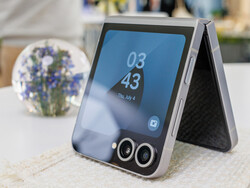
While many competitors are still trying their hand at flip smartphones for the first time, the Samsung Galaxy Z Flip6 5G makes a mature impression, offering a comprehensive all-round package.
With a fast SoC, a bright main display, good battery life, longer updates and useful additions such as wireless charging, IP48 certification, Galaxy AI and dual eSIM, the foldable smartphone is armed with many good arguments.
The Samsung Galaxy Z Flip6 5G offers an excellent all-round package with the only stagnation to be found in its design.
However, when folded, we would prefer the Flip6 to be somewhat slimmer and, in our opinion, the lack of Wi-Fi 7 represents an artificial deterioration. Additionally, the external display only operates at 60 Hz and could be a touch larger since there is enough available space.
Exciting alternatives are the Razr 50 Ultra as well as the Razr 50. The Nubia Flip is even cheaper but corners have been cut in terms of the feature set and updates.
Price and availability
Note: We have recently updated our rating system and the results of version 8 are not comparable with the results of version 7. More information is available here.
Samsung Galaxy Z Flip6 5G
- 09/16/2024 v8
Daniel Schmidt
Transparency
The selection of devices to be reviewed is made by our editorial team. The test sample was provided to the author as a loan by the manufacturer or retailer for the purpose of this review. The lender had no influence on this review, nor did the manufacturer receive a copy of this review before publication. There was no obligation to publish this review. As an independent media company, Notebookcheck is not subjected to the authority of manufacturers, retailers or publishers.
This is how Notebookcheck is testing
Every year, Notebookcheck independently reviews hundreds of laptops and smartphones using standardized procedures to ensure that all results are comparable. We have continuously developed our test methods for around 20 years and set industry standards in the process. In our test labs, high-quality measuring equipment is utilized by experienced technicians and editors. These tests involve a multi-stage validation process. Our complex rating system is based on hundreds of well-founded measurements and benchmarks, which maintains objectivity. Further information on our test methods can be found here.




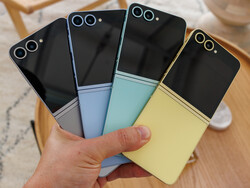















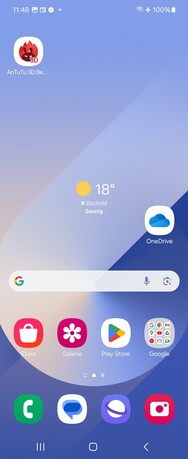
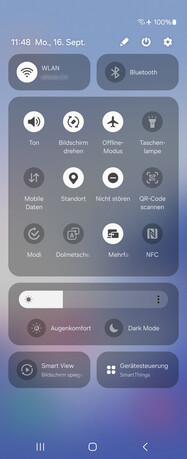
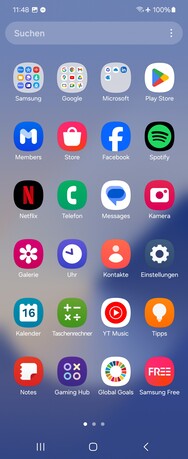



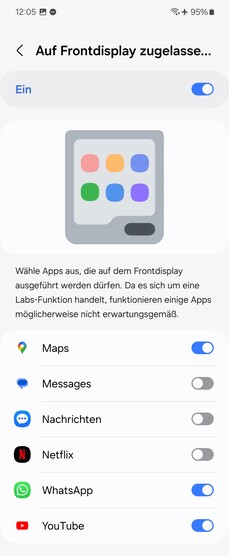

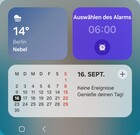
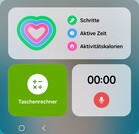
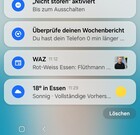
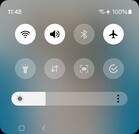
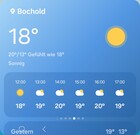
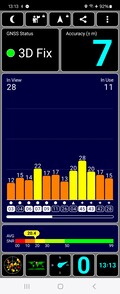
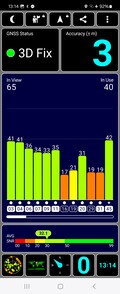
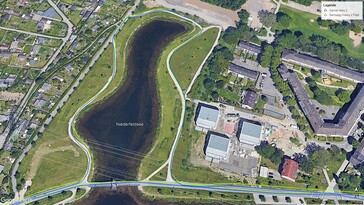
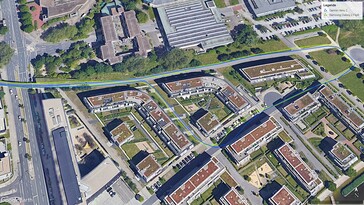



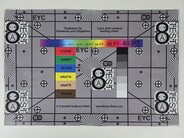

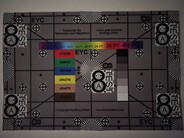



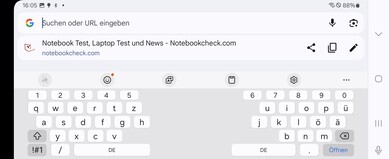


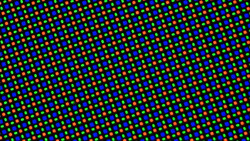
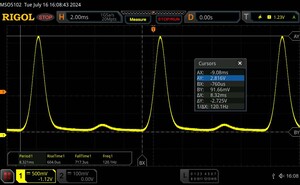








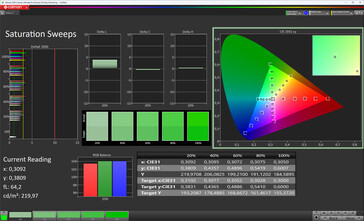
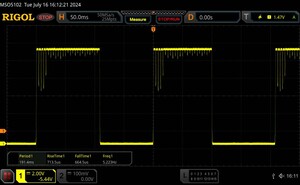
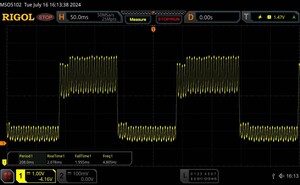

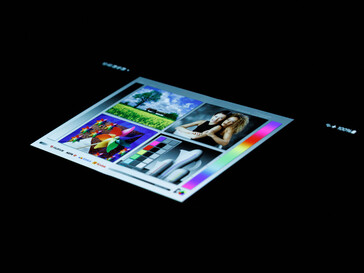
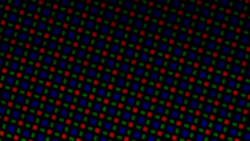
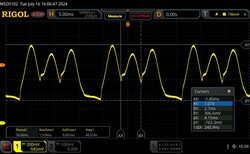
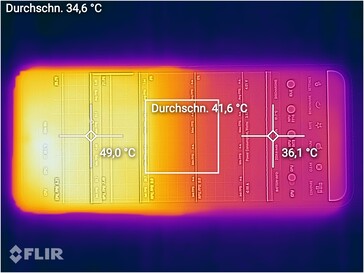
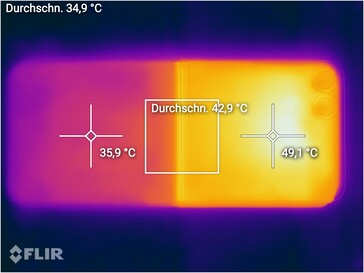
 Total Sustainability Score:
Total Sustainability Score: 